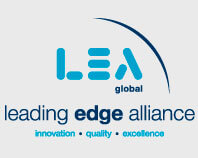Introduction
In recent years, healthcare billing has become increasingly complex, with a plethora of regulations, insurance requirements, and data elements to manage. Healthcare providers are often bogged down with paperwork and manual processes, resulting in time-consuming and error-prone billing procedures. However, the advent of automation technologies, such as robotic process automation (“RPA”), is rapidly changing the way healthcare billing is performed.
In this case study, we examine the impact of RPA on healthcare billing, specifically focusing on two cases where the implementation of RPA modernized cumbersome and tedious manual processes which allowed the staff at both organizations to focus on more complex tasks. In Case 1, the practice used RPA to automate the process of correcting charges and entering those charges into the practice’s billing system. In Case 2, the practice leveraged RPA to compare patient information against an insurance reference database to identify patients that may have been mistakenly marked as uninsured in the practice’s EHR system.
Traditional Billing Process
The traditional healthcare billing process is complex and time-consuming, involving various manual steps that are prone to human error. A typical billing process involves the collection of patient information, insurance verification, coding, charge entry, claim submission, and payment processing. Each step requires careful attention to detail and accuracy to ensure successful claims submission and payment processing. One of the significant challenges in the traditional healthcare billing process is the manual entry of data, which is a tedious and time-consuming task that can lead to errors. For example, incorrect patient information, insurance coverage details, or billing codes can lead to claim denials, delayed payments, and financial losses for healthcare providers.
Key Automation Benefits
To mitigate these challenges, healthcare providers are increasingly turning to automation to improve their billing processes. By automating routine and repetitive tasks such as data entry, healthcare providers can reduce the risk of errors, save time, and improve billing accuracy.
- Improved Accuracy: By automating routine tasks such as data entry and charge correction, healthcare providers can ensure accurate billing and reduce the risk of claim denials and payment delays.
- Increased Efficiency: Automation can significantly reduce the time and effort required for healthcare billing by allowing healthcare providers to process more claims in less time.
- Cost Savings: By reducing the time and effort required for billing, automation can help healthcare providers reduce their operational costs, and help providers identify and correct billing errors that could lead to financial losses.
- Enhanced Data Analytics: By automating the collection and processing of billing data, healthcare providers can generate valuable insights into their billing processes which can be used to identify areas for improvement and optimize billing workflows.
Case Study I: ECR Process Automation
This case focuses on the implementation of automation for error, correct, and repost (“ECR”) processing. The ECR process typically involves identifying errors in healthcare charges, correcting those errors, and finally reposting the charges for reimbursement. Multiplied by thousands of charges this process can take weeks or months when performed manually.
The digital transformation team at Bennett Thrasher developed an RPA solution using UIPath, the industry leading RPA platform, to automate the ECR process of a large hospital system. The automation intakes data from various sources, including medical records and insurance information, logs into the billing system, corrects various data elements on healthcare charges, and reposts them automatically. The solution not only saves time but also ensures accuracy and consistency in the billing process.
The results of the implementation were impressive. The automation reduced the processing time per transaction to 30 seconds, allowing the billing team to process more claims in less time. Additionally, the accuracy of the billing process improved significantly, reducing the number of errors and rejections. This led to an increase in revenue for healthcare providers and improved patient satisfaction due to fewer billing errors.
Case Study II: Insurance Coverage Status Update Automation
Identifying insurance coverage for uninsured patients can be a daunting task for healthcare providers. The process typically involves manually checking multiple databases and contacting various insurance providers, which can be time-consuming and error prone. To address this challenge, the digital transformation team at Bennett Thrasher implemented an automated solution that corrects patients’ insurance status from uninsured to insured.
The automation extracts patient information from the hospital’s EHR system and compares that information to data from an insurance database. It then returns matches back to the automation which updates the hospital’s billing system with the new insurance information. The automation has significantly reduced the amount of time and resources required to identify insurance coverage for uninsured patients. It has also improved the accuracy of insurance information in the hospital’s billing system, reducing the likelihood of claim denials and rework.
The digital transformation team at Bennett Thrasher was able to implement this automation quickly and efficiently, with minimal disruption to hospital operations. The team’s expertise in RPA and healthcare billing allowed them to design a solution that met the hospital’s unique needs and was easily scalable to accommodate future growth.
Conclusion
Overall, the implementation of this automation has demonstrated the significant benefits of leveraging RPA and advanced technologies in healthcare billing. By partnering with the digital transformation team at Bennett Thrasher, healthcare providers can revolutionize their billing processes, reduce costs, and improve patient care. As the healthcare industry continues to evolve and the demands of patients and providers increase, automation will become more critical in managing billing processes. The use of RPA and other automation tools can streamline workflows, reduce errors, and increase efficiency, leading to cost savings and improved patient care. To learn more, please contact Jim Dougherty by calling 770.396.2200.




